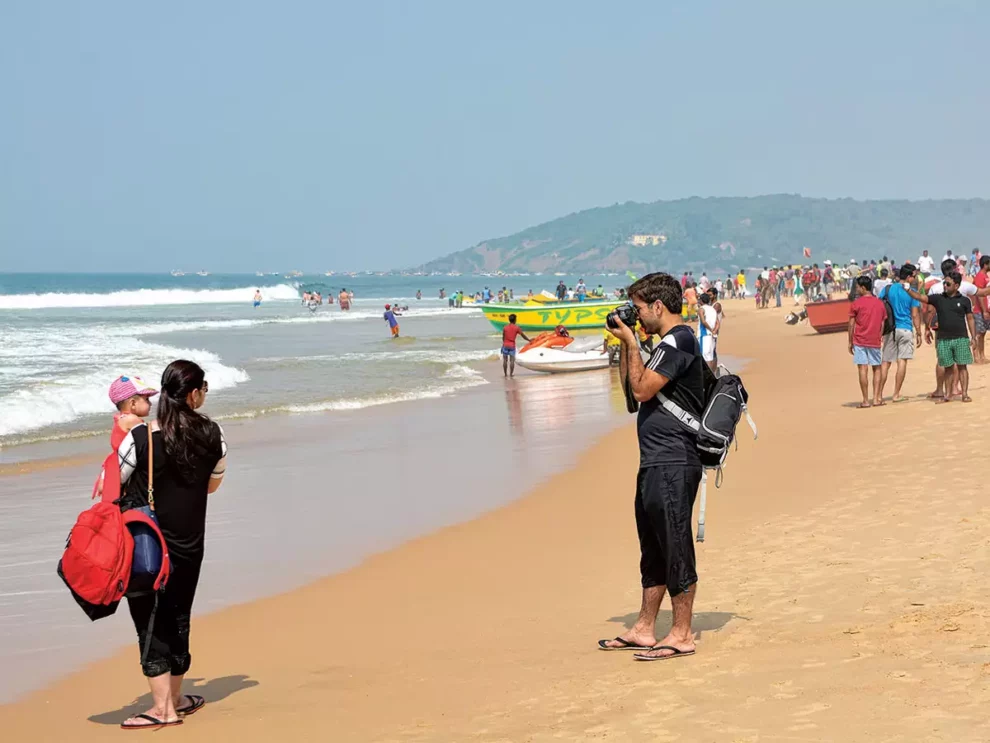The cheering in the tourism industry on the arrival of the Russian charter flight and the enthusiasm displayed over the announcement that the carrier is scheduled to fly six times a week, belies the fact that the Goa government is looking at quality over quantity tourism.
Just last month, Chief Minister Pramod Sawant had said that Goa has seen the ‘consequences of quantity tourists’ coming to Goa and that the State is currently ‘overfull’. He added that getting quality tourists will benefit everyone. It signified a shift in the tourism policies that Goa has been following, though this by no means is a new statement.
Successive tourism ministers have in different ways said the same in the past, statements that have been debated and welcomed, yet does Goa remain just on debate and statement mode on this or does it act on it? Against the backdrop of crowded beaches and swarms of tourists walking through the streets of Panjim, it appears that it is merely announcements with no action.
Take for instance the increasing focus on charter tourism from Russia and Eastern European countries. Goa had seen a drop in charters from Russia post the pandemic, but it has actively been marketing itself in that country. The question is whether charter tourism provides the quality that Goa is seeking in its tourists?
Charter tourism screams budget tourism, and budget tourism equals large numbers of visitors. The economics of charter tourism works out for the travel agents as well as the hotels due to the high turnovers, wherein air operators have flights at full capacity and hotels are ensured occupancy leading to them renting out rooms at discounted rates, and throwing in some freebies including meals to make themselves competitive.
If Goa continues to promote itself as a charter destination, how then will it be able to reduce the numbers to bring in quality tourism? The shift in policy, if any, has to begin with a change in the charter segment.
But that’s not all. Reports emerging on different portals this week state that Goa is the ‘most affordable tourist destination for the year-end holidays’ in India and it is being compared with other destinations in the Asia-Pacific region, where it is the fifth most competitive among the other popular destinations in the region.
If holiday-goers are looking at these reports, and they most definitely are, won’t they decide to ring in the New Year in Goa? The reports are likely to lead to a larger influx of tourists as the year peters out to an end and we can expect a tightly-packed peak tourism week in December. That last week of the year is anyway always one of the most crowded.
This again works out to numbers, quantity over quality. It almost appears that Goa is just paying lip service to the concept of attracting quality over quantity. So when the government is of the opinion that Goa is ‘overfull’, shouldn’t it be working out a strategy to reduce numbers so that we don’t exceed the carrying capacity?
Overtourism is defined as the increase in tourist numbers at such high volumes that it negatively impacts local residents, visitors, and the surrounding environment of a particular destination. Some of the popular coastal villages of Goa and areas such as Fontainhas in Panjim, the coconut-tree lined Parra road are definitely examples of the effects of overtourism.
An article on tripoto.com listed Goa as among seven destinations in India that needs responsible tourism instead of overtourism. What it said was: ‘Goa is a tourist paradise. The beach destination has seen the highest influx of tourists in the last few years. This rise has put this little state in a problem.’
If others are waking up to the effects of overtourism in Goa, when will the policy makers of Goa shake themselves out of their slumber on this
Though overtourism has been discussed in the past, what brought it to the fore was the post pandemic travel undertaken by people who had been closeted first in their homes and then within their towns, which led to huge numbers travelling and it getting the sobriquet of revenge tourism. The threat of overtourism therefore cast a lengthening shadow over destinations that had already been experiencing a large influx of footfalls.
Goa Tourism, instead of cheering over the numbers that it is receiving and the restart of charters, would do well to go back to the drawing board and map the plan for the future, if it is serious of quality over quantity.
Source : Gomantak Times















